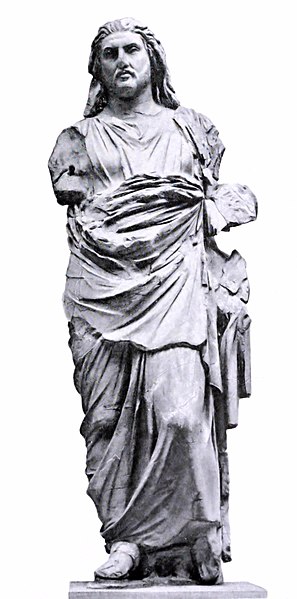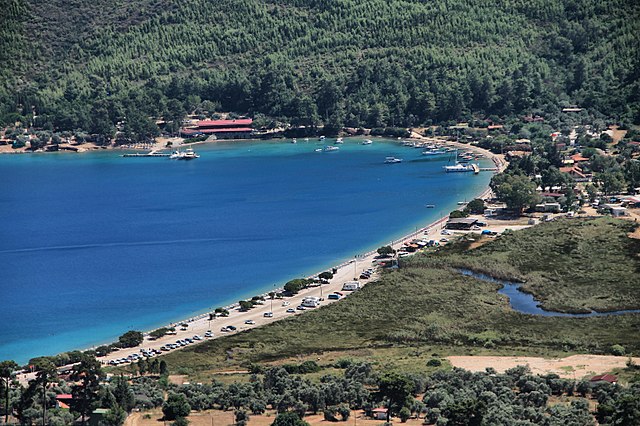Mausolus was a ruler of Caria and a satrap of the Achaemenid Empire. He enjoyed the status of king or dynast by virtue of the powerful position created by his father Hecatomnus, who was the first satrap of Caria from the hereditary Hecatomnid dynasty. Alongside Caria, Mausolus also ruled Lycia and parts of Ionia and the Dodecanese islands. He is best known for his monumental tomb and one of the Seven Wonders of the Ancient World, the Mausoleum at Halicarnassus, the construction of which has traditionally been ascribed to his wife and sister Artemisia.
Mausolus, 377–353 BCE. Casting from the Pushkin museum.
Early 20th century photograph
Modern photograph
Coinage of Maussolos as Achaemenid satrap of Caria. Head of Apollo facing, Zeus Labrandos standing, legend MAYΣΣΩΛΛO ("of Mausolus"). c. 377/6 – c. 353/2.
Caria was a region of western Anatolia extending along the coast from mid-Ionia (Mycale) south to Lycia and east to Phrygia. The Carians were described by Herodotus as being Anatolian mainlanders and they called themselves Caria because of the name of their king. He reports the Carians themselves maintained that they were Anatolian mainlanders intensely engaged in seafaring and were akin to the Mysians and the Lydians. The Carians spoke Carian, a native Anatolian language closely related to Luwian. Also closely associated with the Carians were the Leleges, which could be an earlier name for Carians.
Theater in Caunos
The Mausoleum at Halicarnassus, one of the Seven wonders of the ancient world, was built by Greek architects for the local Achaemenid satrap of Caria, Mausolus (Scale model)
Relief of an Amazonomachy from the Mausoleum at Halicarnassus.
The coast of Milas.








